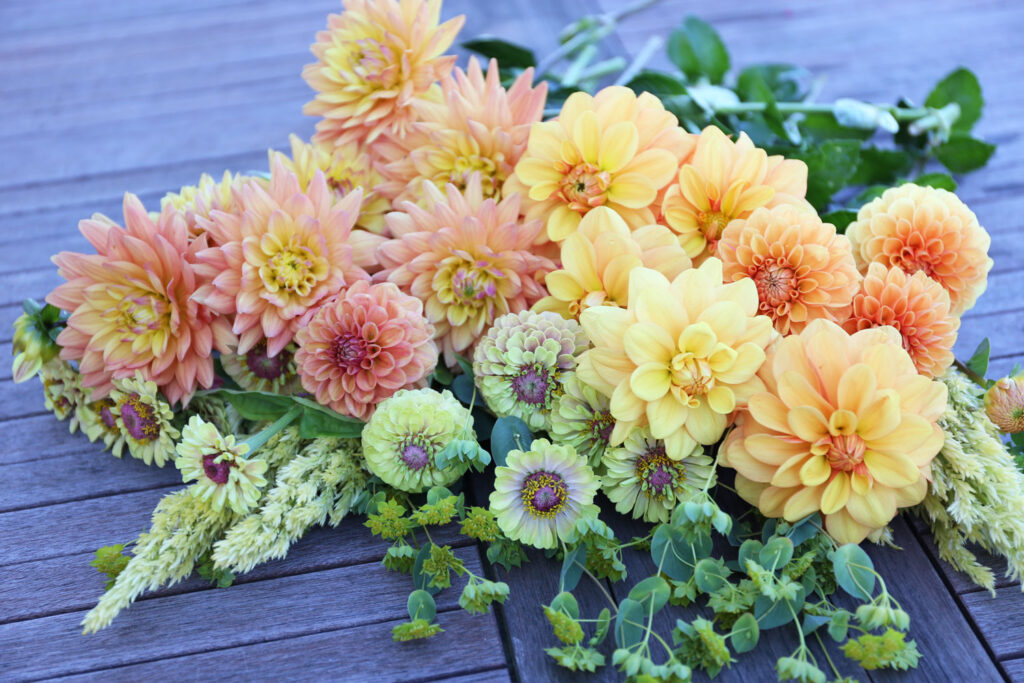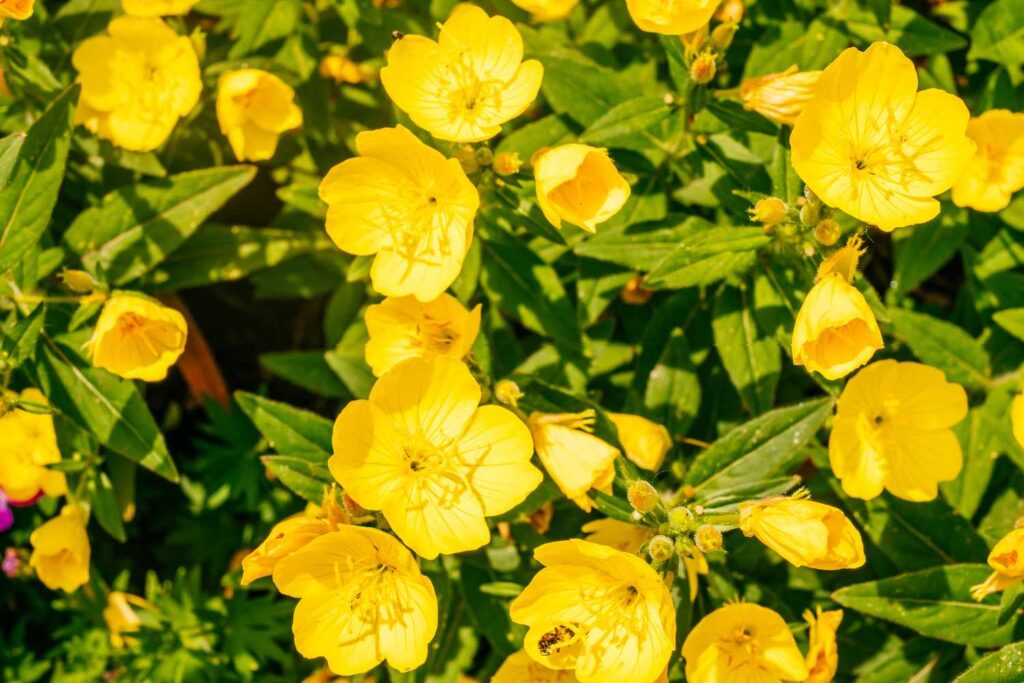Yellow flowers have a long history of significance in various cultures around the world. From ancient times to the present day, these vibrant blooms have been revered for their beauty and symbolism. Understanding the meaning behind yellow flowers can provide us with insights into the beliefs and values of different societies.
Understanding the Symbolism of Yellow Flowers
Yellow, as a color, is often associated with positivity, happiness, and warmth. It is no wonder that yellow flowers tend to convey similar sentiments. However, the specific meanings attached to these blooms can vary across cultures and contexts.
Yellow flowers have captivated people’s attention for centuries, not only for their vibrant hue but also for the symbolism they hold. Let’s explore the fascinating world of yellow flowers and their diverse meanings.
The Meaning of Yellow in Different Cultures
In many Western societies, yellow is often linked to joy, friendship, and optimism. It is seen as a reminder of sunny days and cheerful moments. Yellow flowers, such as sunflowers and daffodils, are commonly exchanged as gifts to celebrate special occasions or to express gratitude.
In contrast, some Asian cultures associate yellow with wealth and royalty. In these cultures, yellow flowers may be used in auspicious ceremonies and as symbols of prosperity. Chrysanthemums, with their golden petals, are highly revered in countries like China and Japan, representing longevity and good fortune.
Native American cultures have their interpretations of yellow flowers. For example, some tribes view yellow flowers as symbols of courage and resilience. These blooms are believed to bring strength and positivity to individuals facing challenges. The Navajo people, for instance, consider yellow wildflowers as a source of spiritual healing and protection.
See Also: Designing Your Dream Wedding with the Perfect Floral Ensemble

The Role of Yellow Flowers in Folklore
Throughout history, yellow flowers have been featured prominently in folklore and myths. These enchanting tales have added layers of meaning to these blossoms, making them even more intriguing.
In many stories, yellow flowers represent happiness, enlightenment, and transformation. They are often associated with mythical creatures and magical realms. Legends speak of fairies who dwell among yellow flowers, granting wishes to those who stumble upon them.
Yellow flowers have also been said to possess healing properties in folklore. In ancient herbalism, extracts from yellow flowers were used to treat various ailments and promote well-being. Their vibrant color is often used as a metaphor for the warmth and vitality of life, reminding us of the beauty that surrounds us.
As we delve deeper into the symbolism of yellow flowers, we uncover a rich tapestry of cultural beliefs and stories that have shaped our perception of these blossoms. Whether they represent joy, wealth, courage, or magic, yellow flowers continue to captivate our hearts and bring a touch of sunshine to our lives.
The Cultural Significance of Specific Yellow Flowers
Yellow flowers, with their vibrant hues and radiant beauty, have long held symbolic significance in various cultures around the world. While all yellow blooms are associated with joy, happiness, and positivity, certain flowers have gained specific cultural associations that add depth and meaning to their allure. Let’s explore a few of these remarkable blossoms:
The Sunflower: A Universal Symbol of Adoration
One of the most universally recognized yellow flowers is the sunflower. With its bright yellow petals that resemble the sun’s rays and its commanding presence, the sunflower has captured the hearts of people across many cultures throughout history. In ancient Greek mythology, sunflowers were associated with the sun god, Helios, and were believed to represent loyalty and adoration. The sunflower’s ability to track the sun’s movement across the sky, known as heliotropism, further solidified its connection to the radiant celestial body.
In modern times, sunflowers have become a beloved emblem of happiness, positivity, and loyalty. Their vibrant yellow color and towering height make them a popular choice for floral arrangements, home decor, and even as a source of edible seeds. Sunflowers are often gifted to express admiration, adoration, and well-wishes for a bright and joyful future.
The Daffodil: A Harbinger of New Beginnings
With their delicate yellow petals and graceful form, daffodils are often seen as heralds of spring and new beginnings. As winter fades away and nature awakens, daffodils emerge from the ground, bringing a burst of color and hope to the landscape. In many cultures, these cheerful flowers symbolize renewal, rebirth, and the promise of a fresh start.
The daffodil’s significance as a harbinger of new beginnings can be traced back to ancient times. In Greek mythology, it was believed that daffodils sprouted from the blood of a young man named Narcissus, who fell in love with his own reflection. The daffodil’s association with Narcissus and his tragic story adds a layer of depth to its symbolism, reminding us of the importance of self-reflection and personal growth.
Today, daffodils are often given as gifts to celebrate new ventures, graduations, and other milestones. Their sunny yellow color and delicate fragrance serve as a reminder to embrace change, embrace new opportunities, and embrace the beauty of life’s constant renewal.

The Marigold: A Flower of Celebration and Remembrance
In various cultures around the world, marigolds hold deep cultural significance and are associated with both celebrations and remembrance. These vibrant yellow flowers, with their intricate petals and earthy scent, have become an integral part of numerous traditions and rituals.
In Mexico, marigolds play a central role in the vibrant and colorful festivities of the Day of the Dead, or Día de los Muertos. During this annual celebration, families gather to honor and remember their departed loved ones. Marigolds, known as “cempasúchil” in Spanish, are used to create elaborate altars and decorate gravesites. It is believed that the vibrant color and strong scent of marigolds help guide the spirits of the deceased back to their families, ensuring a joyous reunion.
In India, marigolds are considered auspicious flowers and are used in various religious ceremonies and celebrations. These golden blooms are often strung together to create garlands, which are then used to adorn statues of deities, altars, and even homes during festivals and special occasions. The marigold’s vibrant yellow color is believed to attract positive energy and bring good fortune to those who display them.
Marigolds also hold significance in other cultures, such as in ancient Aztec rituals, where they were used in ceremonies dedicated to the sun god. Additionally, marigolds have been used for their medicinal properties in traditional medicine systems, further adding to their cultural importance.
As we delve into the cultural significance of specific yellow flowers, we begin to appreciate the rich tapestry of human history and the profound connections we have forged with nature. These flowers, with their vibrant colors and timeless beauty, continue to inspire and captivate us, reminding us of the power of symbolism and the importance of embracing the beauty that surrounds us.
Yellow Flowers in Literature and Art
Yellow flowers have long captured the imagination of writers and artists alike. Their vibrant hue and symbolism have been immortalized in poetry, prose, and visual art.
When it comes to literature, yellow flowers have played a significant role in shaping the emotions and experiences portrayed in various works. Throughout literary history, these flowers have been used as metaphors for a wide range of emotions and experiences. They have represented love, joy, hope, and the fleeting nature of beauty. Poets and writers have recognized their ability to evoke strong emotions and have drawn inspiration from their vibrant colors.
One notable example of yellow flowers in literature is William Wordsworth’s poem “I Wandered Lonely as a Cloud,” commonly known as “Daffodils.” In this poem, the yellow daffodils symbolize the beauty and joy that can be found in nature, even in the midst of solitude. The poet’s encounter with the field of yellow flowers leaves a lasting impression on his mind, bringing him a sense of peace and happiness.
In addition to literature, yellow flowers have also made their mark in the world of visual art. Artists from different eras and cultures have incorporated these flowers into their works, using them as a powerful visual element. The luminosity and warmth associated with yellow flowers have made them a favorite motif in many paintings and art installations.
One of the most famous examples of yellow flowers in art is Vincent van Gogh’s sunflower series. Van Gogh’s vibrant and expressive paintings of sunflowers have become iconic representations of the beauty and vitality of these yellow blooms. Through his use of bold brushstrokes and intense colors, Van Gogh captured the essence of the flowers and conveyed a sense of energy and life.
Another artist who embraced yellow flowers in her work is Georgia O’Keeffe. O’Keeffe’s paintings of enlarged and magnified flowers, including yellow ones, have become synonymous with her unique style. Her close-up depictions of flowers, such as the yellow calla lilies, invite viewers to explore the intricate details and textures of these natural wonders.

Yellow flowers have also been a subject of fascination in various art installations. From large-scale sculptures to immersive floral displays, artists have used yellow blooms to create visually stunning and thought-provoking experiences. These installations often aim to evoke a sense of wonder, inviting viewers to immerse themselves in the beauty and symbolism of yellow flowers.
Overall, the presence of yellow flowers in literature and art highlights their enduring appeal and significance. Whether used as metaphors in poetry or as visual elements in paintings and installations, these vibrant blooms continue to inspire and captivate both creators and audiences alike.
The Psychological Impact of Yellow Flowers
Beyond their cultural significance, yellow flowers are believed to have a positive impact on human psychology and emotions.
Yellow Flowers and Mood Enhancement
Research suggests that exposure to yellow flowers can boost mood and evoke feelings of positivity and happiness. The color yellow is thought to stimulate feelings of joy and energy, making yellow flowers an excellent choice for brightening up living spaces and lifting spirits.
Yellow Flowers as Symbols of Friendship and Joy
In many cultures, yellow flowers, particularly yellow roses, are associated with friendship and joy. They can be given as tokens of appreciation to friends or loved ones to convey warmth and happiness. Yellow flowers symbolize the bond of friendship and the joy that comes from cherished connections.
The Use of Yellow Flowers in Rituals and Ceremonies
Yellow flowers play an essential role in various rituals and ceremonies across different cultures.
Yellow Flowers in Weddings and Celebrations
In weddings, yellow flowers are often included in bouquets, decorations, and centerpieces. They are seen as symbols of happiness, positivity, and good fortune. Yellow blooms can add a vibrant touch to wedding ceremonies and create an atmosphere of joy and celebration.
Yellow Flowers in Funerals and Memorials
In some cultures, yellow flowers are used in funeral rituals and memorials. While yellow may traditionally be associated with happiness, in these contexts, the blooms symbolize the memory of loved ones and bring comfort to those mourning their loss. The vibrant yellow can serve as a reminder of the joyous moments shared with the departed.
In conclusion, yellow flowers hold deep symbolism and cultural significance across various societies. Their vibrant colors and positive connotations make them a popular choice for celebrations, rituals, and artistic expressions. Whether they convey joy, friendship, or new beginnings, yellow flowers continue to captivate and inspire people around the world.
